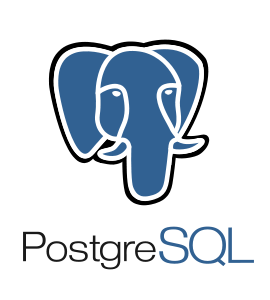Hash tables are one of the best features in Kamailio, but they can be a double edged sword. Build web applications that work with the htables architecture can be difficult.
I am using Django since a few years ago. This framework had helped me a lot with forms, database models, fixtures, test, migrations, etc.. But when I needed to use Django in conjunction with htables I found it painful: building forms, fixtures and all that was not easy anymore.
PostgreSQL provides powerful solutions for this problems. One of my favourites is HStore. With HStore we can move from Django models to Kamailio htables in few lines of code.

If, for example, we have the following data:
CREATE TABLE "domain" (
id bigserial PRIMARY KEY,
name character varying(100) NOT NULL,
limit_calls integer,
limit_duration integer,
statsd_prefix character varying(40) NOT NULL,
params character varying(64) NOT NULL,
strip integer,
prefix character varying(16) NOT NULL
);
INSERT INTO domain
("name", "limit_calls", "limit_duration", "statsd_prefix", "params", "strip", "prefix")
VALUES
('acalustra.com',10, 3600, 'acalustra', 'nomedia=yes',0,'0034'),
('acalustra.es',10, 3600, 'acalustraes', 'nomedia=yes',0,'0034');
In this case we have one table with a lot of domain preferences. In our Kamailio we will only need read access, so the easy way it's to create a new view that generates Kamailio htable format.
For that purpose we can use the following SQL query:
CREATE extension hstore;
drop view htable_domain;
create view htable_domain as
select
rank() over (order by (x).key, name) as id,
(name|| '::'|| (x).key)::varchar(64) as key_name,
0 as key_type,
0 as value_type,
CASE WHEN ((x).value is not NULL) THEN (x).value::varchar(128) ELSE ''::varchar(128) END as key_value,
0 as expires
FROM (
select name, each(hstore(domainPref)) as x from (
select * from domain
) as domainPref)
as htable;
This query uses a few PostgreSQL functions:
- rank(): Create a new id per row over the result.
- hstore(): with the subquery(domainPref) creates a new dict like colum name -> value.
Now we have a new SQL view with the following information:
=> select * from htable_domain;
id │ key_name │ key_type │ value_type │ key_value │ expires
────┼───────────────────────────────┼──────────┼────────────┼───────────────┼─────────
1 │ acalustra.com::id │ 0 │ 0 │ 1 │ 0
2 │ acalustra.es::id │ 0 │ 0 │ 2 │ 0
3 │ acalustra.com::limit_calls │ 0 │ 0 │ 10 │ 0
4 │ acalustra.es::limit_calls │ 0 │ 0 │ 10 │ 0
5 │ acalustra.com::limit_duration │ 0 │ 0 │ 3600 │ 0
6 │ acalustra.es::limit_duration │ 0 │ 0 │ 3600 │ 0
7 │ acalustra.com::name │ 0 │ 0 │ acalustra.com │ 0
8 │ acalustra.es::name │ 0 │ 0 │ acalustra.es │ 0
9 │ acalustra.com::params │ 0 │ 0 │ nomedia=yes │ 0
10 │ acalustra.es::params │ 0 │ 0 │ nomedia=yes │ 0
11 │ acalustra.com::prefix │ 0 │ 0 │ 0034 │ 0
12 │ acalustra.es::prefix │ 0 │ 0 │ 0034 │ 0
13 │ acalustra.com::statsd_prefix │ 0 │ 0 │ acalustra │ 0
14 │ acalustra.es::statsd_prefix │ 0 │ 0 │ acalustraes │ 0
15 │ acalustra.com::strip │ 0 │ 0 │ 0 │ 0
16 │ acalustra.es::strip │ 0 │ 0 │ 0 │ 0
Now, in Kamailio we only need to set the htable parameters:
modparam("htable", "htable", "domainPref=>dbtable=htable_domain;")
With this piece of code, we can use this htable having our web developers happy which will definitely increase our dev speed.